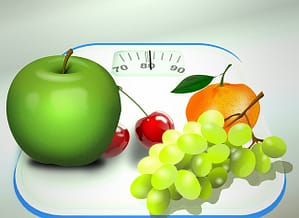One of the heaviest people in medical history was Jon Brower Minnoch who was born in 1941 and died in 1983. Minnoch had suffered from obesity since he was a kid. He was 6 feet and 1 inch tall and weighed 392 pounds in 1963, and 700 pounds in 1966 and 975 pounds in 1976. “In 1978, Minnoch was admitted to University Hospital in Seattle where consultant endocrinologist Dr. Robert Schwartz said Jon must have weighed more than 1,400 pounds, a lot of it was water weight due to his heart failure.”
It took 12 firemen and a fake stretcher that was big enough to move him from his home to a boat, from there he went to a hospital in Seattle. When he got to the hospital, he was filled with fluid and was suffering from heart and respiratory failure, he had to be put on two beds put together side by side, it took over a dozen people to just roll him over.
After almost two years of being put on a diet of 1,200 calories a day, he lost enough weight where he could be discharged at 476 pounds. In October 1981 he had to go back to the hospital after putting on more than 190 pounds. When he died in September in 1983 he had weighed more than 798 pounds.
When people around the world are asked ‘what do you think of America?’ Many will say obese, large, or they will think of all the fast food that Americans’ eat. “Many factors can lead to energy imbalance and weight gain. They include genes, eating habits, how and where people live, attitudes and emotions, life habits, and income.”
What is Obesity?
According to American Heart Association, “People with a body mass index (BMI) of 30 or higher are considered obese. The term “obesity” is used to describe the health condition of anyone significantly above his or her ideal healthy weight. Nearly 70% of American adults are either overweight or obese. Being obese puts you at a higher risk for health problems.”
The words ‘overweight’ and ‘obesity’ are used when somebody’s body weight is more than what is considered to be healthy. BMI is based off of your weight and your height.
Consequences of Bad Eating and Exercise Habits
According to Food Safety News, “High body mass and physical inactivity makeup 2 of the 10 most common health losses and deaths in America. High body mass has 363,991 deaths and physical inactivity has 234,022 deaths. Americans increased their physical activity by about 15% in 2010. Deaths due to lack of physical activity is ranked as 5th highest. Many people think diets are good ways to lose weight and get healthy but if you cut out important nutrients it can be harmful. When you have very bad eating habits and horrible exercise habits it can be easy to become overweight or obese. Being overweight or obese can have deadly consequences in very bad cases.”
The Daily Mail says, “For many years Ricky Naputi, who at his heaviest tipped the scales at more than 900 pounds, battled with his food addiction, and at the time of his death hadn’t walked on his own for more than 7 years. His wife Cheryl described looking after him as ‘just like taking care of an overgrown baby’, and Ricky fell in and out of a deep depression over the state his life was in.
The couple live on the island of Guam, just a four hour flight from Brisbane, where 6 out of 10 people are classified as either overweight or obese. Ricky could barely speak without becoming short of breath, let alone stand up or move from the bed he was confined to. He often needed the assistance of an oxygen machine.”
Diseases from Obesity
National Institute of Diabetes and Digestive and Kidney Diseases states; “Some diseases that come from people who are overweight or obese are, type 2 diabetes, heart disease, high blood pressure, nonalcoholic fatty liver disease, osteoarthritis, some types of cancer: breast, colon, endometrial , and kidney and strokes.
About one-third of children and adolescents ages 6 to 19 are considered to be overweight or obese. More than 2 in 3 adults are considered to be overweight or obese. More than 1 in 20 adults are considered to have extreme obesity.”
How to Stop and Prevent Obesity
Again according to the National Institute of Diabetes and Digestive and Kidney Diseases; “Treatment may include a mix of behavioral treatment, diet, exercise, and sometimes weight-loss drugs. In some cases of extreme obesity, weight-loss surgery may be an option.”
There are many programs to help stop weight gain and get you back to a healthy weight. There are programs like weight watchers and tv shows dedicated to weight loss like biggest loser.
According to the U.S. Department of Health and Human Services, “Following a healthy lifestyle can help you prevent overweight and obesity. Many lifestyle habits begin during childhood. Parents and families should encourage their children to make healthy choices, such as following a healthy diet and being physically active.Be active. Make personal and family time active. Find activities that everyone will enjoy. For example, go for a brisk walk, bike or rollerblade, or train together for a walk or run.
Reduce screen time. Limit the use of TVs, computers, DVDs, and videogames because they limit time for physical activity. Health experts recommend 2 hours or less a day of screen time that’s not work- or homework-related.
Focus on portion size. Watch the portion sizes in fast food and other restaurants. The portions served often are enough for two or three people. Children’s portion sizes should be smaller than what adults get. Cutting back on portion size will help you balance energy in and energy out.”
Surgery for Weight Loss
WebMD states, “There are many types of weight loss surgery. Adjustable gastric banding, Implanting an electric device, and Malabsorptive/ restrictive surgery are just a few surgeries.
Adjustable gastric banding weight loss surgery works by the surgeon uses an inflatable band to squeeze the stomach into two sections: a smaller upper pouch and a larger lower section. The two sections are still connected by a very small channel, which slows down the emptying of the upper pouch. Most people can only eat a 1/2 to 1 cup of food before feeling too full or sick. The food also needs to be soft or well-chewed.
Implanting an electrical device is one of the newest ways to lose weight. It works by interrupting nerve signals between the stomach and the brain.
Malabsorptive/ restrictive surgeries change how you take in food. They give you a smaller stomach and also remove or bypass part of your digestive tract, which makes it harder for your body to absorb calories.”
Post by AbigailB. Featured image by splitshire.com







What do you think?
Show comments / Leave a comment